Everyone likes plants around them, and adding plants near the pool is a delight. But before adding plants, you must make sure the plants are strong enough to survive near pools.
A pool can increase the humidity, and harsh sun rays can cause sunburn; choosing the right plants is crucial.
Following the given, we have chosen 15 plants for growing around your pool. Also, check with your climate while choosing from these plants.
Tropical hibiscus
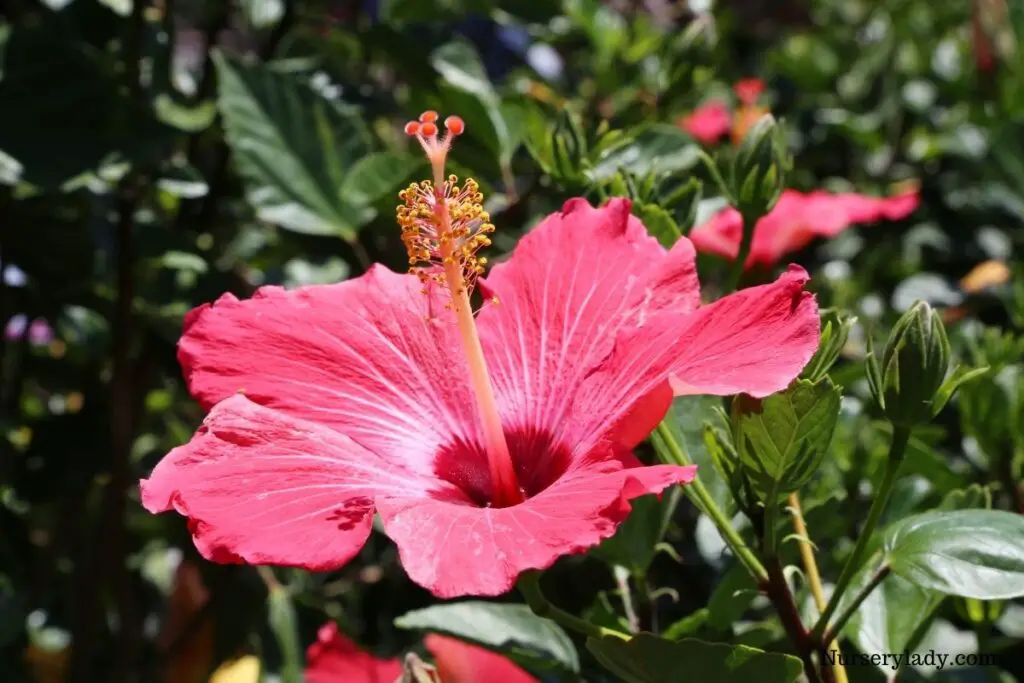
Tropical hibiscus produces beautiful trumpet-shaped blooms, and each flower lasts for a day only.
They can grow up to 15 feet high in favorable conditions, and they can be grown near pools as they do well with wet conditions.
Light: Hibiscus will be happiest in full sun, especially in cooler months. Give them some shade from the direct sun in hot and dry areas.
Watering: Water hibiscus regularly to keep it moist. Water them daily or even twice a day in extreme heat, depending on the climate. Ensure proper drainage to avoid fungal problems.
Fertilizer: Hibiscus will stay happy and have abundant blooms if fertilized throughout the growing season. Feed with diluted emulsion fertilizer for vigorous blooming.
General care: Hibiscus thrives in temperature between 55°F and 70°F. In cold weather, they cannot survive and may die. Prune in fall to stimulate new growth and allow good airflow.
Bird of paradise
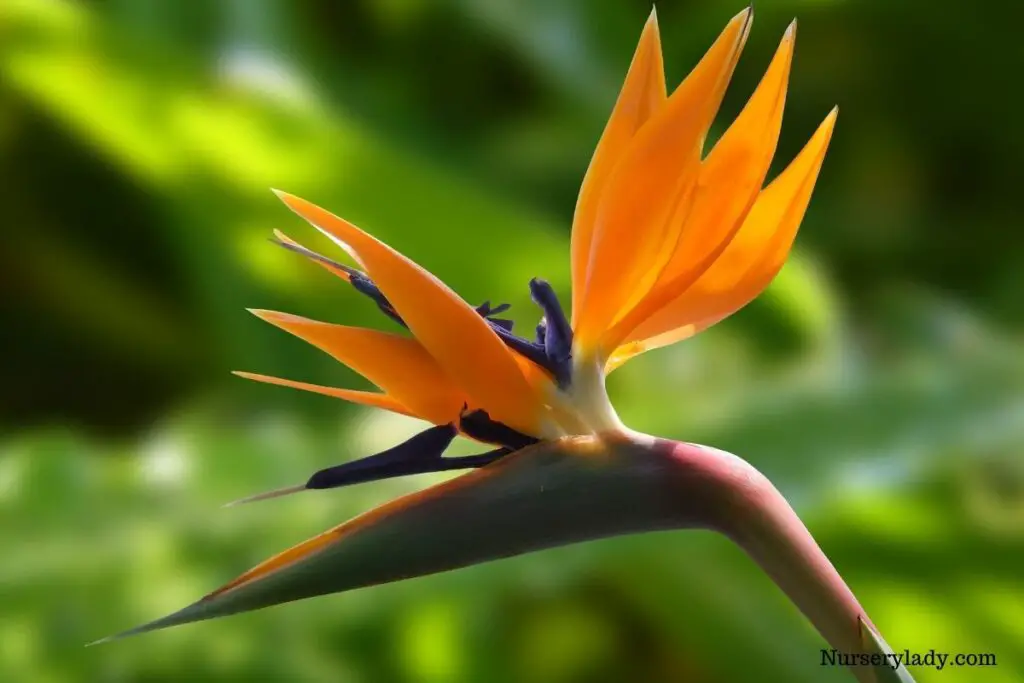
Bird of paradise has upright foliage without a trunk and orange or white flowers. They are one of the best tropical plants, perfect for a poolscape.
They grow vigorously and flowers in late winter or early spring, but they are toxic to pets.
Light: Bird of Paradise thrives in indirect bright light and appreciates some direct sun, and they need some shade if exposed to the harsh sun all day long.
Watering: Waterbird of paradise so that the soil is evenly moist throughout the year. Due to huge leaves, they need frequent watering to keep them hydrated. Water and let the excess water drain out.
Fertilizer: The bird of paradise requires proper feeding to grow and develop. Use slow-release fertilizer in the spring or liquid balanced fertilizer during the growing period.
General care: Bird of Paradise thrives in high humidity, and regular misting will help in dry months. They cannot tolerate cold and can thrive till the temperature is above 60°F. Remove the damaged, dead leaves, plant matter by using scissors or pulling them off.
Zebra grass
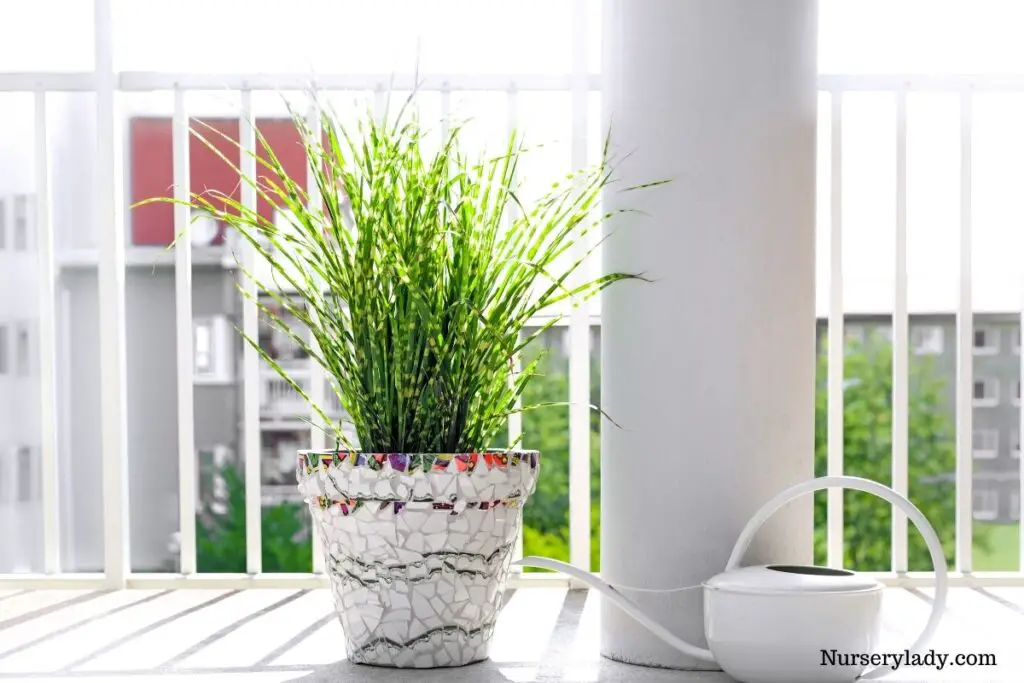
Zebra grass has green leaves with horizontal golden stripes and produces tiny white flowers.
They have a moderate to fast growth rate, and some varieties can be invasive. Their leaf color may change with change in season. It can be grown near pools, in containers, etc.
Light: Zebra grass needs full sun for the best growth and blooms. Low light and shaded can inhibit their growth and lead to floppy leaves. Use a stake or some support to keep their leaves upright.
Watering: Zebra grass, when young, needs regular water to become strong and mature. Mature Zebra grass is drought tolerant and can do well with supplemental watering.
Fertilizer: Zebra grass is the light feeder. They will benefit from adding compost into the soil, or you can use balanced organic fertilizer in the spring.
General care: Zebra grass thrives in temperatures between 70°F to 90°F. You can cut the stalks in the late winter by leaving 5-6 inches from the ground.
Papyrus
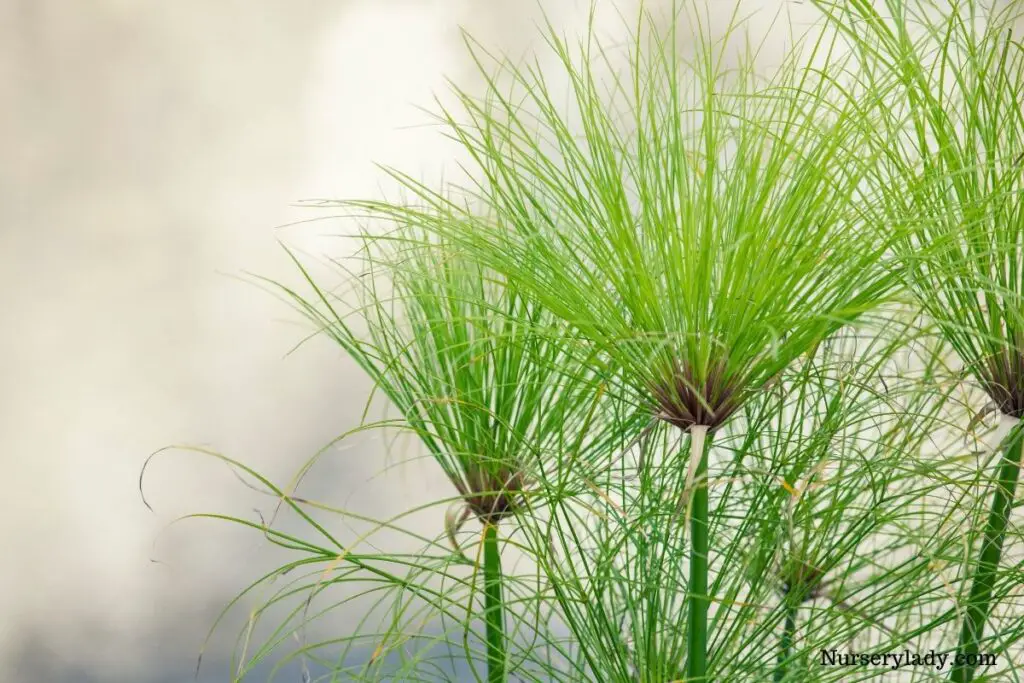
Papyrus produces greenish-brown blooms and is grown for its foliage. They bloom in summer and also produce but like fruits.
They can grow well near pools due to their native environment near the borders of the Nile river valley. They are low maintenance and can grow up to 8feet high.
Light: Papyrus thrives in full sun but can grow in partial shade too. In hot summer, give them some shade from the intense sun. In low light, they will not develop that well.
Watering: Water papyrus regularly to make sure the soil is constantly wet. They thrive in wet feet and need a lot of moisture to thrive. During dry months, water daily and deeply to avoid dry soil.
Fertilizer: Papyrus does not need feeding if the soil mix is fertile. If the soil medium they are grown in is poor, prefer amending organic matter into the soil during planting.
General care: Papyrus likes warm temperatures and needs mulching to protect from winter. Cut its foliage to ground level in early spring or fall.
Looking for gardening supplies? We have tested 100's of products before recommending them to you guys. Check out our best pick below:
| Image | Gardening Supplies | Best Price? |
|---|---|---|
 Top
Top Top
Top | Raised Garden Bed Kit | Check On Amazon |
 | XLUX Soil Moisture Meter, Plant Water Monitor, Soil Hygrometer Sensor for Gardening, Farming, Indoor and Outdoor Plants, No Batteries Required | No Results |
 Top
Top Top
Top | 82 Pcs Garden Tools Set and Extra Succulent Tools Set | Check On Amazon |
 | Joeys Garden Expandable Garden Hose with 8 Function Hose Nozzle, Lightweight Anti-Kink Flexible Garden Hoses, Extra Strength Fabric with Double Latex Core, (50 FT, Black) | No Results |
 Top
Top Top
Top | Dual Chamber Compost Tumbler | Check On Amazon |
 Top
Top Top
Top | Sunnyglade Plant Stakes | Check On Amazon |
 Top
Top Top
Top | Organic Cold Pressed Neem Seed Oil | Check On Amazon |
 Top
Top Top
Top | Mighty Mint Gallon :-Insect and Pest Control Peppermint Oil | Check On Amazon |
 Top
Top Top
Top | Scotts DiseaseEx Lawn Fungicide | Check On Amazon |
 Top
Top Top
Top | Jacks Classic 20-20-20 All Purpose Fertilizer | Check On Amazon |
 Top
Top Top
Top | 30,000 Seeds Pollinator Attracting Wildflower Mixture | Check On Amazon |
 Top
Top Top
Top | Survival Vegetable Seeds Garden Kit-Over 16,000 Seeds | Check On Amazon |
Brugmansia

Brugmansia produces attractive hanging flowers adding delight to your garden. You can grow them near a pool, in containers, etc.
They grow quickly, increasing 2-3 feet each year. They are also toxic to pets and humans.
Light: Brugmansia thrives in full sunshine. In hot weather, provide some shade from the afternoon sun. Provide the plant with 6-8 hours of light daily to produce the best blooms.
Watering: Water Brugmansia daily and deeply. Ensure proper drainage to avoid waterlogging. During summer, they may need watering twice a day. Make sure the soil does not dry out before watering.
Fertilizer: Brugmansia should be fertilized monthly in the growing season. Use diluted balanced fertilizer by adulterating it to half the recommended strength.
General care: Brugsmansia likes warm temperatures and may suffer in temperatures below 40°F.
Pruning will promote blooming. Prune old branches and stems to help plants grow more branches.
Echeveria
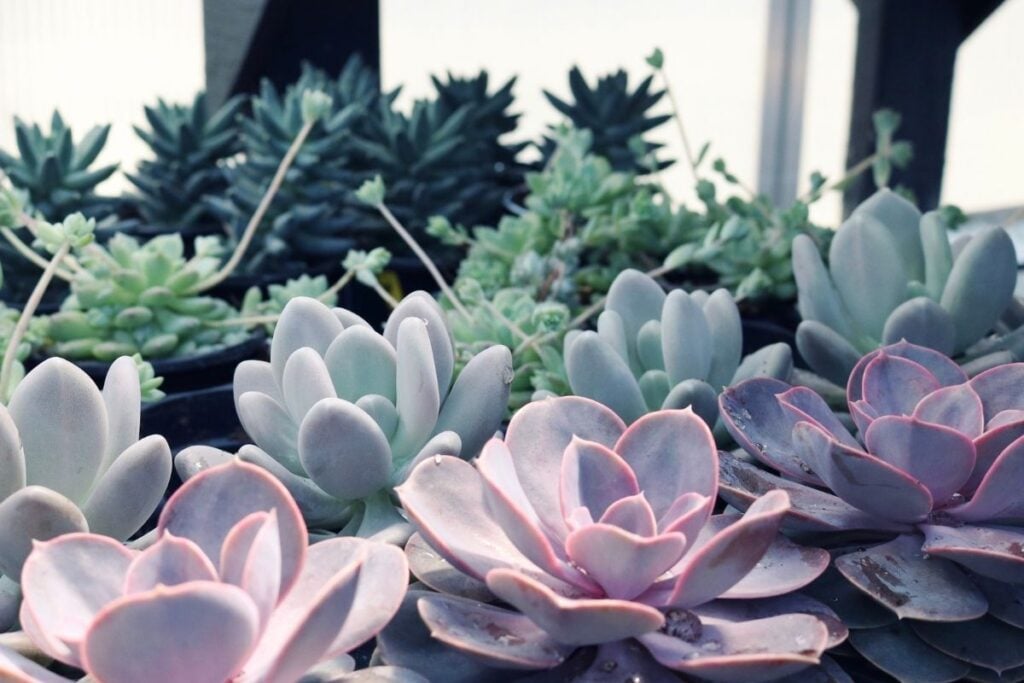
Echeveria grows in beautiful rosettes with elegant leaves in several color ranges. You can find different varieties with different colors and forms, and they are a perfect choice for a pool landscape and grow up to 1 foot.
Light: Echeveria is the perfect choice for a sunny window. They need full sun exposure to stay healthy and grow blooms.
Watering: Water echeveria evenly for consistently moist soil. During winters, reduce watering and allow the soil to dry halfway before watering. Check the drainage system and avoid sogginess.
Fertilizer: Fertilize echeveria with a controlled-release fertilizer at the beginning of the growing season. When the plants mature, feed with balanced fertilizer by diluting it to half strength throughout the growing season.
General care: Echeveria thrives in temperatures between 65°F to 70°F. They can tolerate winter temperature levels up to 50°F. Remove dead leaves from the plant whenever you see them.
Kangaroo paw
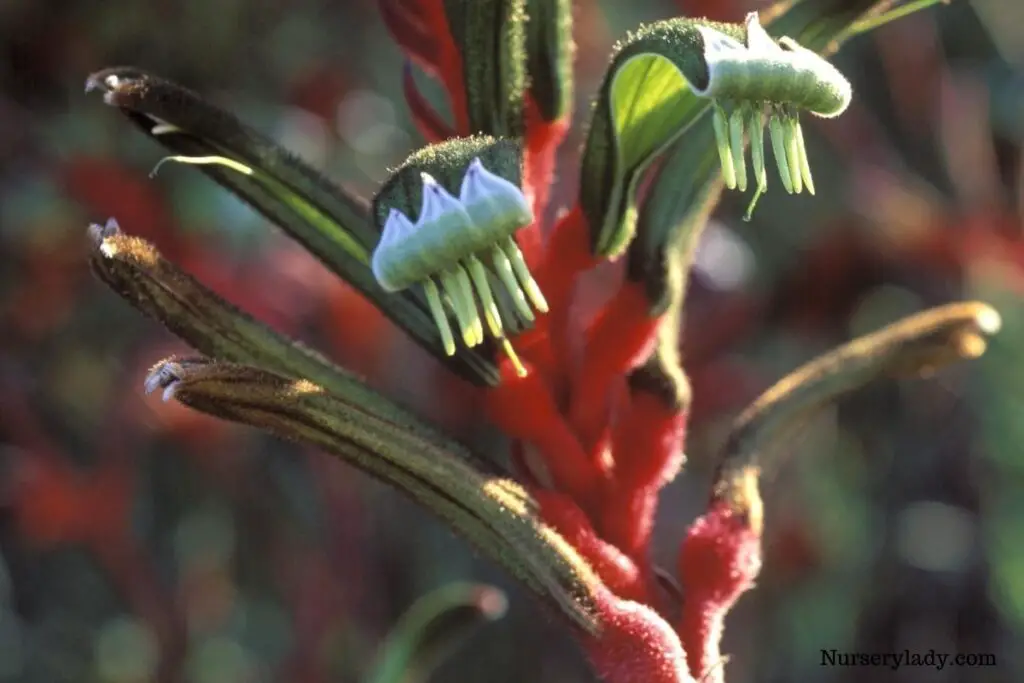
Kangaroo paws produce unusual flowers covered with velvety fuzz appearing like an animal paw.
These flowers come in different shades of orange, yellow, red, and purple. They are low maintenance and grow rapidly, and they will flourish near pools, in gardens, etc.
Light: Kangaroo paw grows well in full sun exposure. Provide them with 6-8 hours of direct light every day for better growth and best blooms. They can withstand the strong sun of summer.
Watering: Kangaroo paw is drought tolerant but appreciates evenly moist soil. Avoid keeping the soil in standing water, or it can lead to root rot. Check the soil before watering to avoid over water.
Fertilizer: Kangaroo paw will grow and bloom best by simply adding compost to the soil. Regular fertilizing is not required for Kangaroo paws.
General care: Kangaroo paw thrives in high temperatures and struggles in frost. Temperature levels between 70°F and 80°F. They tolerate some humidity too.
Regal Geraniums
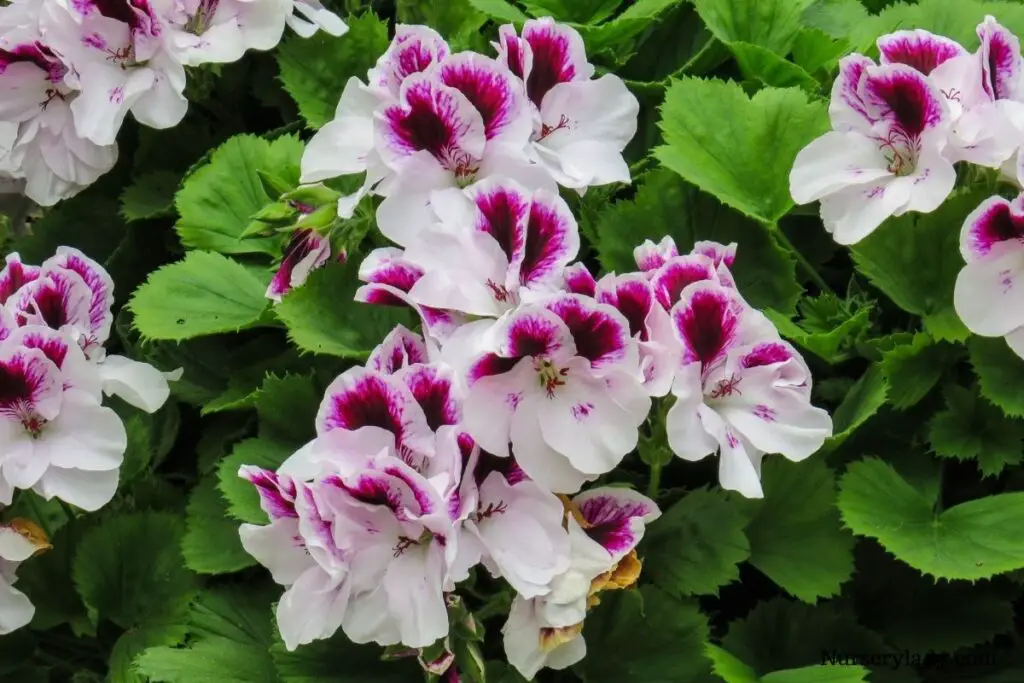
Regal geraniums produce flowers in colors like pink, purple, white, and thick green leaves.
They can be grown in containers, hanging baskets, near pools, etc. They can grow up to 36 inches tall, depending on the variety.
Light: Regal geranium grows best in full sunlight and can grow in partial shade too. They need some shade in the hottest months during the afternoon.
Watering: Regal geranium is drought tolerant. Let the soil dry, and then water it thoroughly for better blooming. Do not let them sit in standing water.
Fertilizer: Regal geranium doesn’t need much feeding. Light feeding with a balanced fertilizer is good enough for them in the growing season.
General care: Regal geranium likes warm temperatures and dislikes cold temperatures. Preferred temperature levels for the plant are between 55°F to 80°F. Freezing temperatures may kill them, and protection is necessary to save the plant.
Protea plants
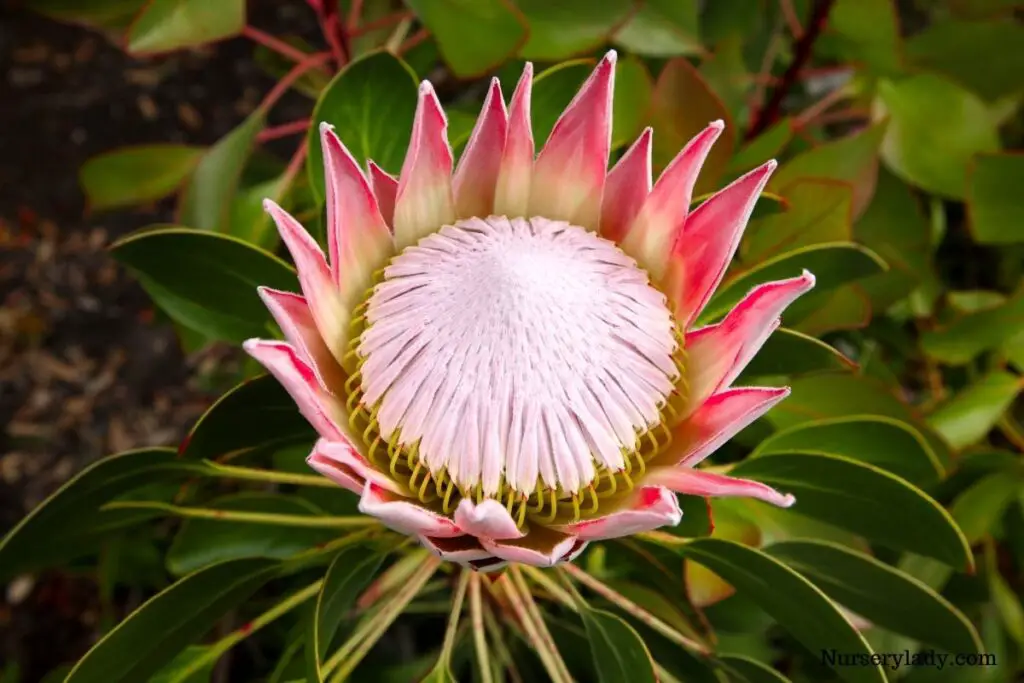
Protea produce flowers that bloom in clusters and green leaves. They are hardy, and with their thick leaves, they can survive harsh conditions too.
They can be grown near pools, in gardens, etc. They can grow up to 26 feet high, depending on the variety.
Light: Provide protea with an abundance of light and good airflow. The key to more flowers in full sun. Low light will inhibit both their growth and blooms.
Watering: Protea needs frequent watering when young. Once established, try to need water when the soil is dry. When they are a year old, water weekly when the weather is dry.
Fertilizer: Protea can thrive without feeding. Too much feeding can kill them, especially due to phosphorus in the food. They will benefit from a mulch of leaves or bark.
General care: Protea is a sturdy plant and can tolerate temperatures as low as 23°F. They can withstand temperatures as high as 100°F.
Sweet potato vine
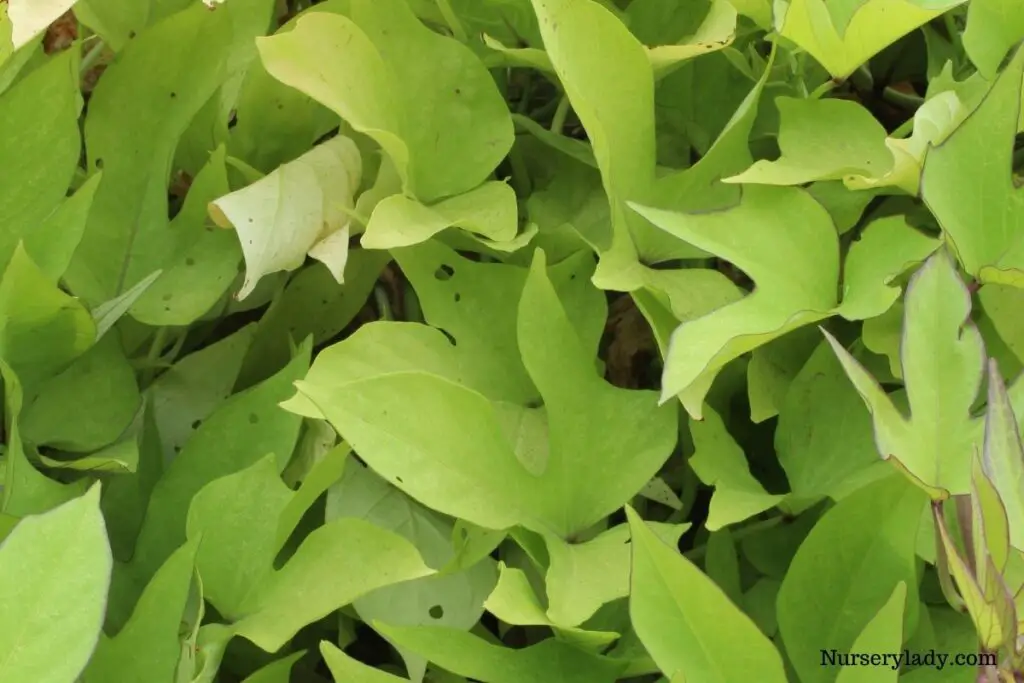
Sweet potato vine has beautiful leaves and produces edible tubers. They come in a variety of shapes, colors depending on the variety.
Their vines look beautiful growing in containers, tumbling over the sides. They can be grown near pools, in gardens, pots, etc.
Light: Sweet potato vine can grow in almost all light conditions, from full sun to full shade. However, they love full sun the most for maintaining its beautiful leaves.
Watering: Sweet potato vine will grow and develop better with frequent watering. They are drought tolerant but will be happiest if the soil is kept evenly moist. Their leaves may wilt when the plant needs a drink.
Fertilizer: Sweet potato vine can be fed with balanced fertilizer throughout their growing months. Feeding will lead to vigorous growth, so be ready to cut them back.
General care: Sweet potato vine-like warm temperatures but will suffer in high heat. They like low to average humidity and don’t need high humid conditions. Remove dead and sick vines, cut above leaf nodes to promote new growth.
Agave
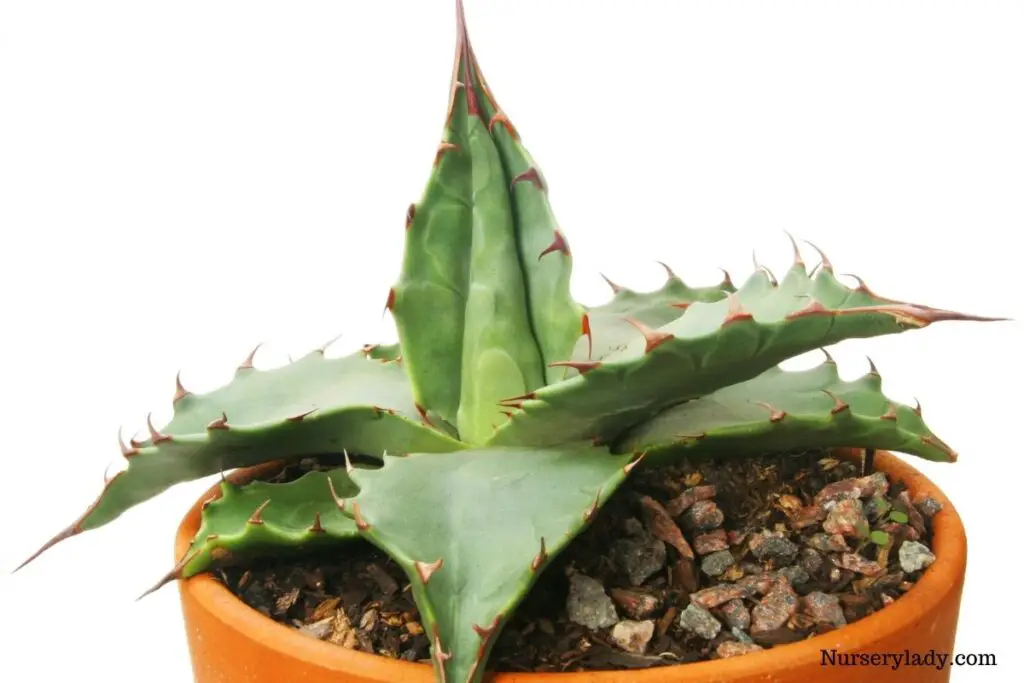
Agave is slow-growing succulents whose leaves change color with the season. They produce bell-shaped blooms in colors like yellow, green, white, etc.
Depending on the variety, they can reach 20 feet in height and spread 10 feet wide. They have spiny tops and are toxic to animals. They can be grown near pools, in containers, etc.
Light: Agave prefers a sunny location, and a minimum of 6 hours of direct sun is best. In hot summer, they appreciate some shade, and in cool months direct is best.
Watering: Agave when matured, can tolerate drought. Water them when the soil is completely dry, and it will be enough for them. Young plants need water more frequently, water in regular intervals till matured.
Fertilizer: Feed agave only if you want it to flower. They do not need any fertilizing to thrive, and after blooming, these plants usually die.
General care: Agave plants can grow in high temperatures but cannot tolerate frost. They prefer low humidity, as high humidity can cause crown rot.
Hebe
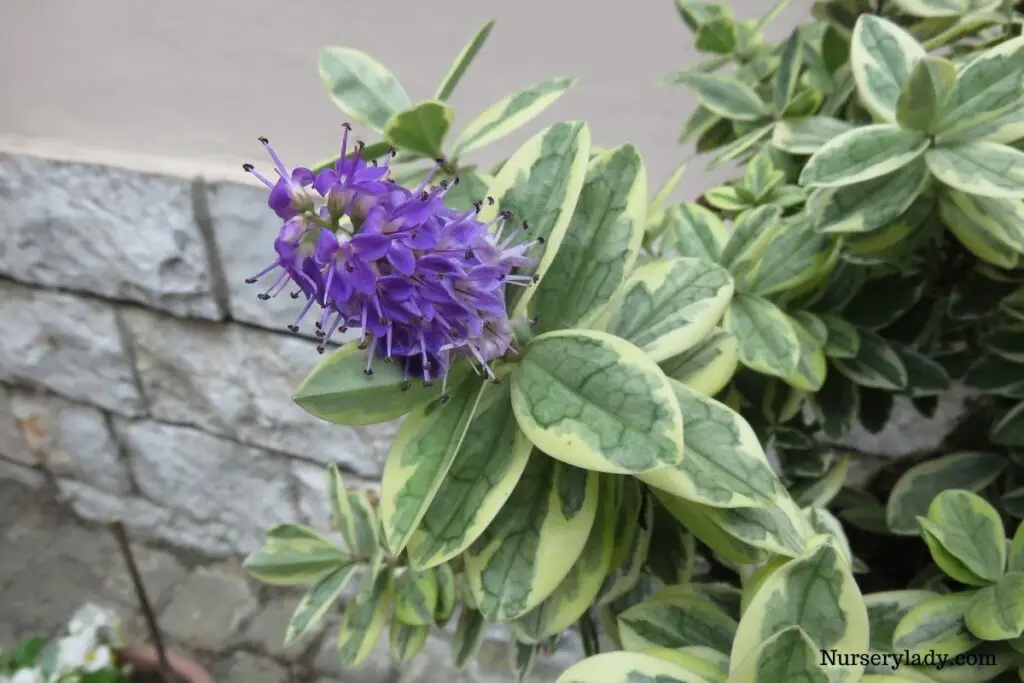
Hebe comes in various foliage colors and spiked flowers in colors like red, pink, white, blue, or purple.
They are easy to grow and can be a favorite pick for poolscape, container gardening, etc.
Light: Hebe does well in full sun to partial shade, and they can become leggy if kept in low light for long periods. For an abundance of blooming, they need an abundance of light exposure.
Watering: Hebe would appreciate a time when the soil is halfway dry, and it will promote their growth and healthy foliage. They are drought-tolerant, but weekly watering will keep them happy and full.
Fertilizer: Hebe are light feeders and will be happier without any fertilizing. You can add organic matter or compost in late winter or early spring to give them a boost.
General care: Hebe can withstand cold temperatures. However, freezing temperatures can damage them. Covering them or keeping them near heating systems will help protect them from frost. They prefer warm to cool temperatures.
Jade
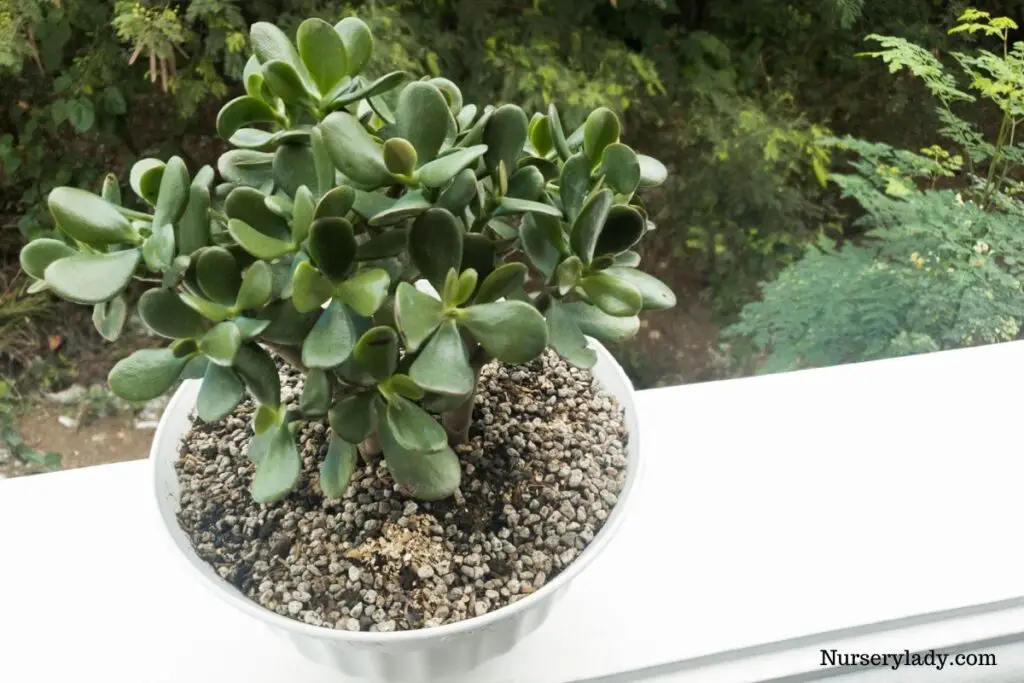
Jade comes in a variety of shapes and textures and is low maintenance. They can be grown as houseplants, gardens, pools, etc.
They are small plants and grow at a slow pace, and they bloom in spring and summer.
Light: Jade needs good lighting to attain color and shade during intense hot sun. Bright Indirect light for the entire day will also keep them healthy and happy.
Watering: Water jade sparsely and water only when the soil is dry. Water deeply and allow excess water to drain completely. During winters, reduce watering to prevent root rot. Check the soil moisture before watering them.
Fertilizer: Feed jade with organic fertilizer for succulents in mid-spring. Do not feed excessively. Feed by diluting it to half the recommended strength.
General care: Jade likes warm temperatures but will suffer from frost. Temperature levels below 30°F can even kill the plant. They prefer low humidity but can also tolerate high humidity.
Aeonium
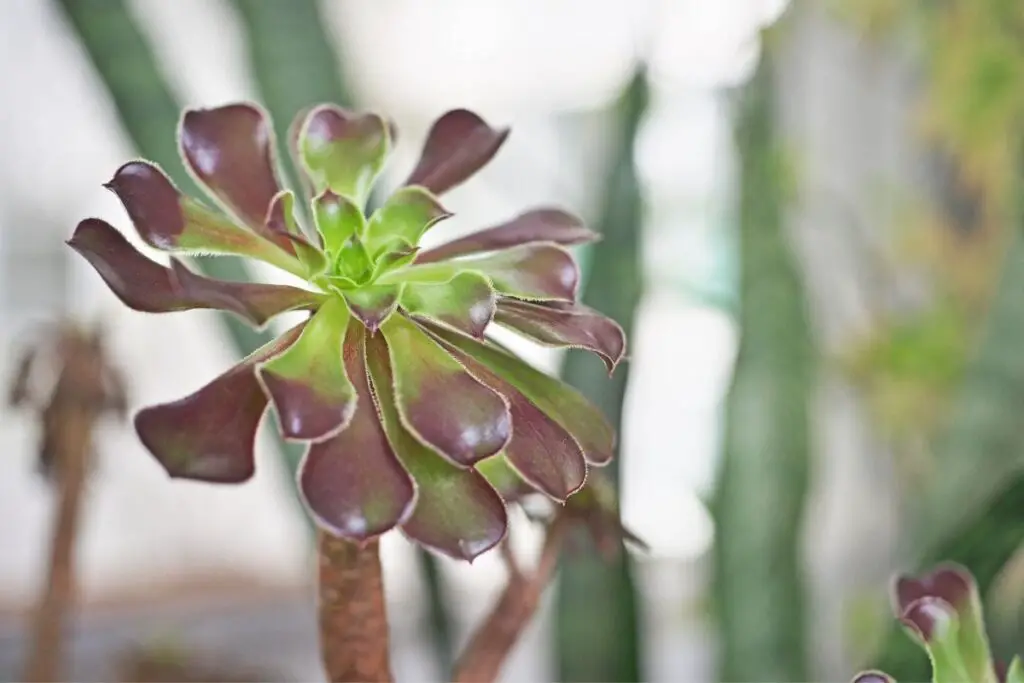
Aeonium is succulents with waxy rounded leaves in rosettes. They produce tiny flowers in clusters from the center but are not that showy.
They are slow-growing plants and take a few years to produce flowers. They can be grown in containers near pools but should be kept in a safe spot during frost.
Light: Aeonium is a sun-loving plant and grows best when exposed to full sun for long hours every day. Light shade is good to protect them from any damage in dry and hot summers.
Watering: Water aeoniums when the top few inches of the soil is dry. You can poke your finger from the top and check the soil moisture. They like moist soil but should not be kept in standing water.
Fertilizer: Fertilize aeoniums during the growing months with a balanced fertilizer. Dilute the fertilizer to half the recommended strength. Avoid feeding in the dormant season.
General care: Aeoniums prefer Mediterranean weather i.e. neither too hot nor too cold and not too dry. The ideal temperature level is between 65°F to 75°F.
Creeping Jenny

Creeping Jenny produces small, pretty yellow flowers and is known for its foliage.
They are a great pick for poolscape, ground cover, container garden, etc. They are fast-growing and will rapidly cover a large part of your garden.
Light: Creeping Jenny grows best in full sun to partial shade. The more the light, the better the growth and color of the leaves. Afternoon intense rays can cause sunburn.
Watering: Creeping Jenny likes moist soil. Water the plant frequently to keep the soil evenly moist and not let it dry out.
Fertilizer: Creeping Jenny can be fed with a diluted balanced fertilizer like 10-10-10 for best growth. Do not over-fertilize and avoid feeding in dormant months.
General care: Creeping Jenny likes warm temperatures but can survive cold. Protect them from frost and extreme temperatures. They like high humidity.
Reference: The University of Minnesota, Kansas State University, BBC Wildlife Magazine, Arizona-Sonora Desert Museum.
